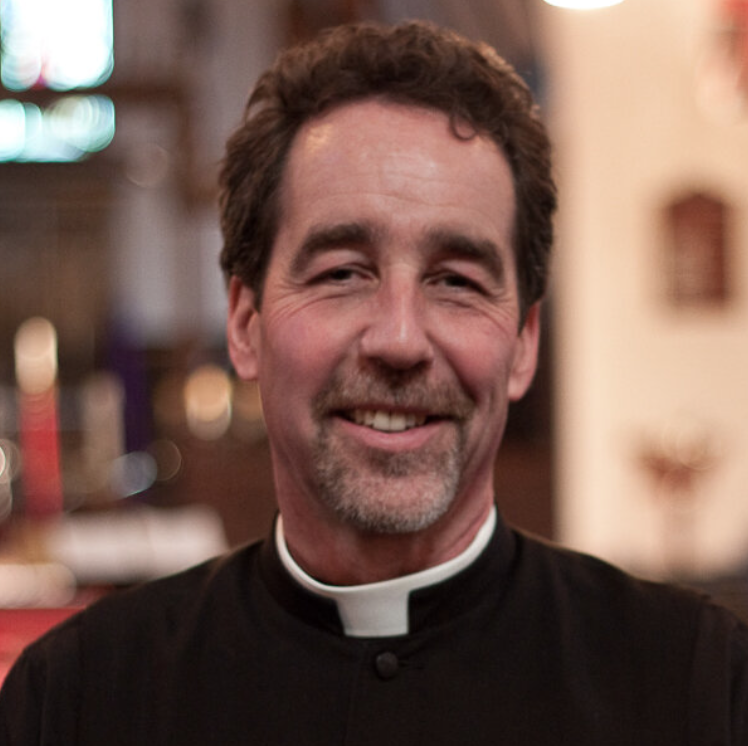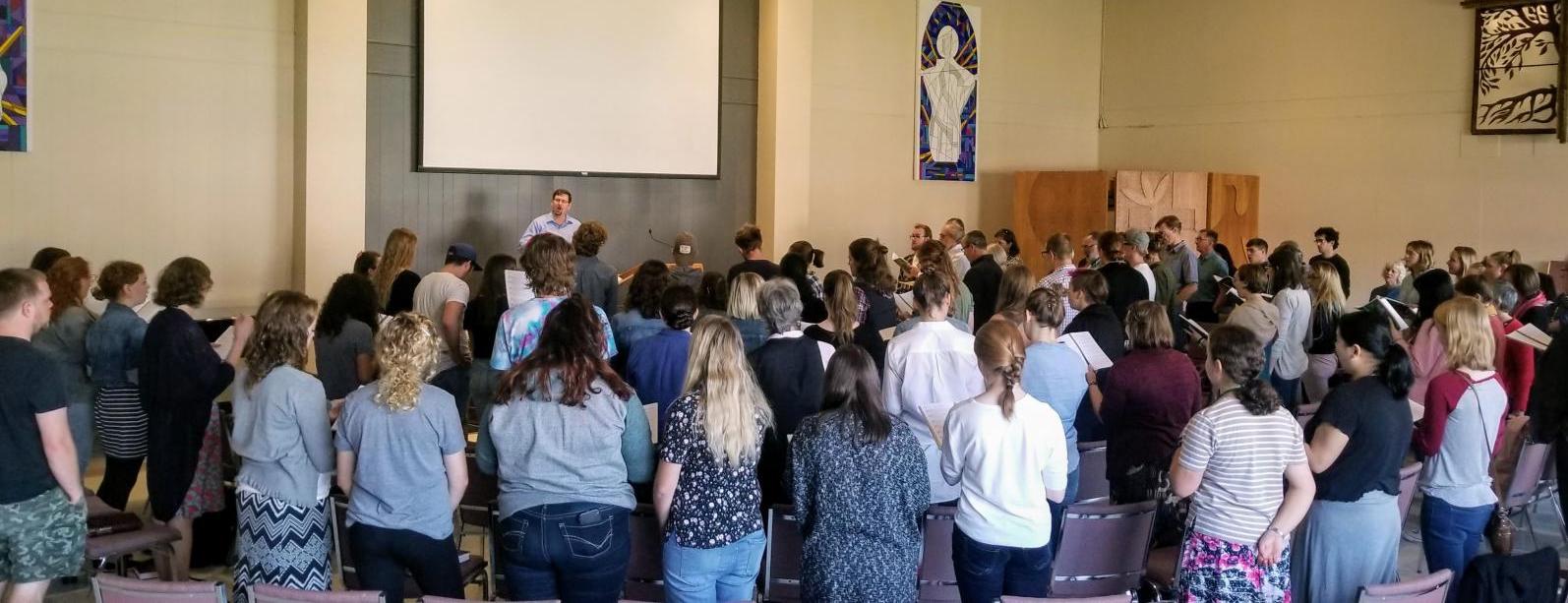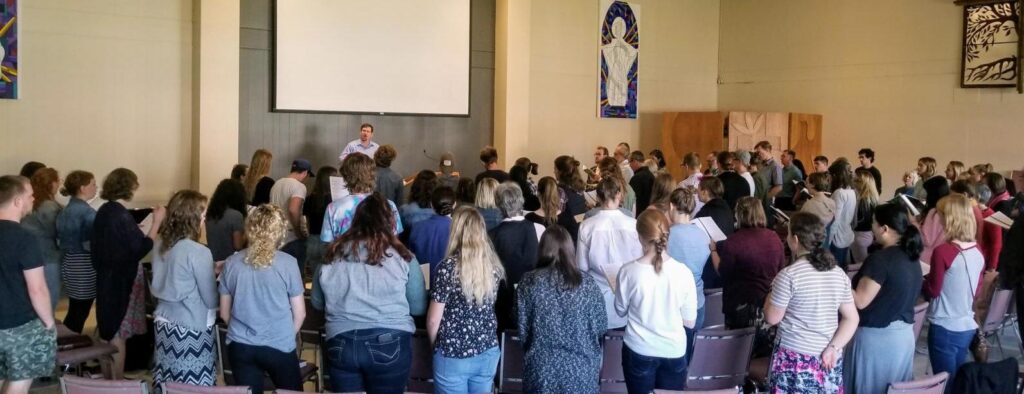Thanks to a shift in approach, Tuesday all-campus worship gatherings at Canadian Mennonite University are attracting a better, more consistent turnout from the student body.

What’s different? Danielle Morton, CMU’s spiritual life facilitator, says that incorporating liturgy has brought much-needed stillness, rest and intimacy back to a campus worship routine that was not drawing attendance as it once had.
“CMU chapels happen twice a week for half an hour. That’s not a lot of time,” Morton says. “Even so, staff and faculty have been increasingly hesitant to lead chapel, feeling they lack the time and creativity required to plan a meaningful worship service from scratch, especially on regular rotation. When the Community Gatherings Committee considered the idea of having one weekly chapel structured by a set liturgy, a set form, laid out in advance but with moveable pieces that each week’s leader could customize, the approval was just overwhelming. There was a sense of fresh opportunity.”
These changes, Morton explains, were implemented in response to student, staff, and faculty feedback.
“The committee heard the community expressing a need for places of stillness, places where silence is appreciated and practised,” she says. “This liturgical structure we’re using would, previously, maybe come up only once or twice a semester. But each time it seemed to be getting good feedback and gaining traction. When people saw that it was coming up, they would make a point of attending chapel, even if they regularly might not.”
Jamie Howison is priest and founder of Saint Benedict’s Table, an Anglican congregation in Winnipeg that has celebrated strong seasonal attendance from CMU students for 15 years. He says that this thirst for occasions to worship in stillness is an old one.

“Aware that a good number of students were joining our Sunday evening liturgy, I initially wondered why they rarely attended any of our other events,” he says. “When I asked one of the students about this, she answered that the last thing any of them needed was yet another study group, lecture or social function. Campus life already provides more than enough of these opportunities. ‘What we don’t have is Sunday worship,’ she told me, adding that having a service in the evening was perfect for students who didn’t want to get up early on a day off. Over the years, students have also pointed to the contemplative tone of our liturgy, the importance of being welcomed openly to the communion table, the fact that we really value congregational singing, and—not least of all—the relative brevity of the sermons.”
These core points—a reliable, contemplative structure for worship, available at a convenient time, contained within a time frame that respects the limits of a student’s best concentration—all inform the new approach Morton and her team are now taking to chapels at CMU.
“This liturgical move constitutes a fairly significant, though asked-for, change from the old way of doing things on campus, and a push toward styles less familiar in Mennonite circles,” she says. “Amidst all this, we keep saying ‘we don’t want to throw the baby out with the bathwater, we just want to add a little bubble bath.’ In the process, we are rediscovering that we can actually merge styles! We can use contemporary music within old forms or structures, ancient prayers in new settings. The only question for us is, how do we accomplish this elegantly?
“Our current structure flows through six movements, taking the congregation through all the essential paces of connecting with God together, in half an hour: We prepare; we gather in worshipping God; we hear God’s word; we confess our sins, fears, and failures, in prayer; we pray for ourselves and others; and we’re dismissed to ‘go in peace.’ Our hope is that this liturgy will be simple enough to enter into regardless of students’ background or experience.”









Leave a Reply
You must be logged in to post a comment.